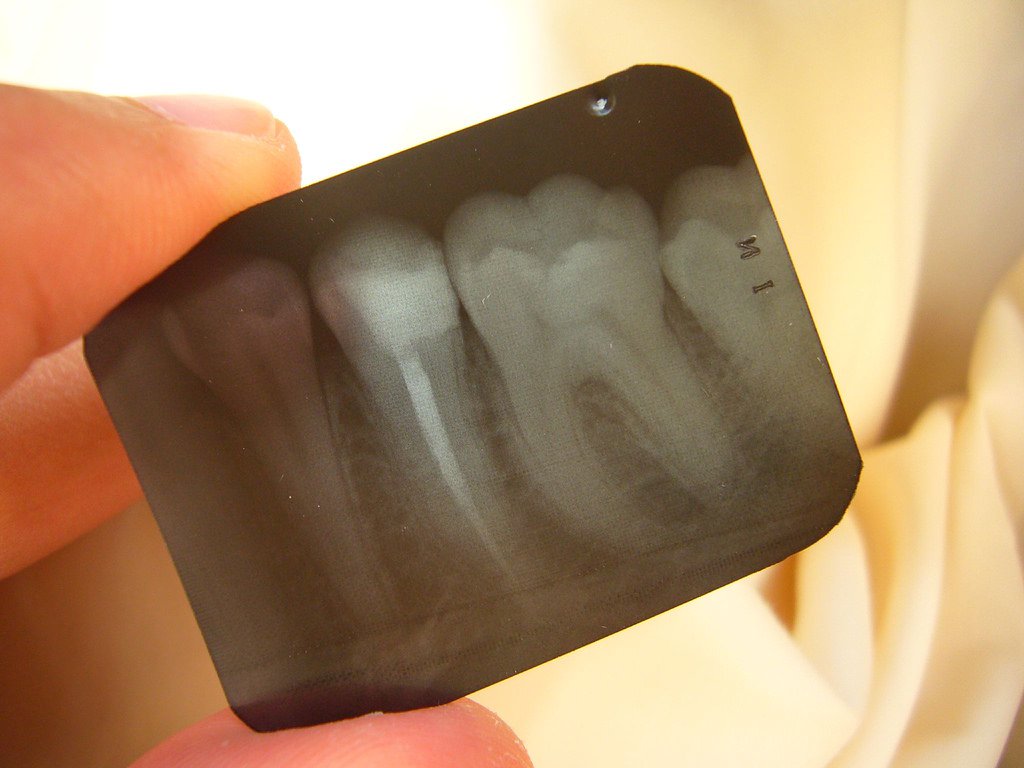7 Things You Can Do to Prevent Tooth Decay
Are you sure you’re doing everything you can to prevent cavities? To protect your mouth from tooth decay, here are 7 crucial things you need to do.

photo by Bashar Al-Ba'noon via Flickr.
Believe it or not, cavities and tooth decay are the second most common health disorder in the U.S., just behind to the common cold. Although cavities are most common for children and young adults, basically anyone with teeth is susceptible to getting cavities, no matter what the age. To keep your teeth safe, here you’ll find out what you need to know about the formation, treatment, and prevention of cavities.
How Are Cavities Formed?
The culprits behind tooth decay are bacteria and food. Cavities form over time leading to tooth decay. According to Mayo Clinic, here’s how that process happens:
Plaque Forms
Your mouth is full of a variety of bacteria, both good and bad for your oral health. The bacteria behind the formation of plaque is of a kind that thrives off of sugar found in food and drinks. When the sugar comes in contact with your teeth, the bacteria feeds on them and produces acids as a result. The acid attack will continue for about 20 minutes after you eat. This leads to the formation of bacterial plaque (the clear, sticky substance forming on teeth and gums). If plaque is not removed while it’s soft, it becomes hard and rough. It’s difficult to remove, especially towards the back teeth, making it a great place for bacteria to live.
Plaque attacks
Plaque produces acids that eat away and remove the minerals in tooth enamel, the hard protective layer of teeth. The first stage of cavities is when this erosion creates small holes and openings in the enamel. As the enamel is removed, the acid and bacteria begin to wear away at your dentin, the next layer of teeth. This layer is more vulnerable because it’s softer and less resistant to acid.
Decay continues
If left untreated, the bacteria and acid will continue to cause tooth decay deeper into the structure of teeth. After eating through the enamel and dentin, they will move to the pulp and inner material of your tooth containing nerves and blood vessels. When decay advances to this level, it may result in a bacterial infection that could lead to a tooth abscess (a pocket of pus). You may experience symptoms such as a severe toothache, pain, tooth sensitivity, and discomfort when biting down.
A few things that put you at higher risk for tooth decay:
- Smoking, or breathing secondhand smoke
- Having diabetes
- Eating high carbohydrate or sugary foods that feed the bacteria in your mouth. Lack of brushing or flossing teeth on a regular basis
- Not seeing a dentist for regular screenings and checkups.
- Having dry mouth, or not enough saliva. Saliva washes away food and sugars that harm teeth, protecting and remineralizing a tooth’s enamel
Symptoms
Often times, you won’t experience any symptoms when a cavity first develops. That’s why seeing a dentist for regular check ups is crucial for catching cavities before they cause major damage to your teeth. As the decay worsens, you may have the following symptoms and signs:
Tooth sensitivityToothachePain when biting downPain when eating or drinking something sweet, hot, or coldVisible holes or pits in teethBrown, black, or white stains on tooth surface
7 Ways to Prevent Tooth Decay
Dental professionals recommend these tactics for preventing tooth decay:
- Brush your teeth after eating with fluoride toothpaste. Ideally, it's best to brush after every meal, no less than twice a day. Using a toothpaste that contains fluoride is highly recommended. Mayo Clinic also recommends using an interdental cleaner or floss to clean between teeth. If you consume sugary substances, you should wait at least 30 minutes before brushing so that you don’t brush away the enamel on your teeth. If you’re unable to brush your teeth after eating, you can at least rinse your mouth with water or mouthwash. If you have a young child, it’s important to consult your dentist about how to care for their teeth.
- Rinse regularly. Your dentist may recommend that you rinse with mouthwash containing fluoride if you’re at a high risk for developing cavities. You can ask them about what type/brand they would recommend to best fight cavities.
- Get a dental sealant. The Centers for Disease Control and Prevention recommends sealants for all school-age children. Still, they are helpful for both adults and children. Sealants are a protective, plastic coating that seal off the grooves and crannies of teeth where food and bacteria tend to collect. They are applied to the chewing surface of the back teeth, and they last up to 10 years before they need to be replaced.
- Keep up with regular dental visits. Talk to your dentist about how frequently you’ll need visit to maintain your oral health. Regular oral exams, professional teeth cleanings, and other treatments can help prevent dental decay and spot problems early on.
- Limit your frequent snacking and sipping. Eating or drinking a little here and there throughout the day puts your teeth under constant attack, especially when you eat sugary foods. The bacteria in your mouth feeds off of the carbs and sugars to produce an acid that destroys tooth enamel. The best thing to do is to drink water frequently instead, taking sips between bites, and keep the snacking to a minimum.
- Stick to tooth-healthy foods. Diet is crucial to all aspects of health, including oral health. Foods that tend to get stuck in your teeth for long periods of time will promote tooth decay, such as chips or cookies. And of course, processed, sugary foods aren’t a good option either. Instead, opt for fresh vegetables and fruits, as they actually help increase saliva flow and remineralize tooth enamel.
- Consider an antibacterial treatment. Sometimes medical conditions or other scenarios might make you especially vulnerable to dental erosion and decay. In this case, you might want to talk to your dentist about treatments to help cut down on harmful bacteria, such as special antibacterial mouth rinses.
Treatment
The type of treatment you need will vary depending on the state of your cavity. If caught in its early stages, a small lesion can be treated with fluoride paste and varnished to help stop demineralization. However if the cavity is formed, the only way to treat it is to remove the decay and put a filling in place. There are several ways to go about this type of treatment, including:
Fillings
If you need to get a filling, your dentist will remove decayed tooth material caused by a cavity using a drill. They will then put a filling in place composed out of gold, silver alloy, composite resin, or porcelain. Traditionally, metal fillings are used for back teeth where the material is not very visible. Porcelain or composite resin are usually used for front teeth cavities to match the natural tooth color.
Crown or cap
If tooth decay is more extensive, the may be weakened with little structure remaining. In this case, a tooth requires more than a traditional filling and may be restored with a dental crown. Your dentist will first remove the decayed part of the tooth. Then a gold or porcelain crown will be placed to fit over the remainder of the tooth.
Root Canal
If a cavity is left untreated, the decay can continue to seriously damage a tooth and surrounding area. A root canal is necessary if a nerve is damaged. During this procedure, the pulp and decaying center of the tooth must be removed. Then, the tooth is covered with a sealing material, then filled, and then a crown is placed on top of the tooth.
Importance of Affordable Dental Care
Working with your dentist is a crucial way of maintaining oral health for you and your family. Sadly, more than 100 million Americans don’t go to the dentist because they can’t afford it. Thankfully, there are discount dental plans available to anyone who is looking for affordable dental care. You can find out more about the discounts and savings offered by Carefree Dental here.





